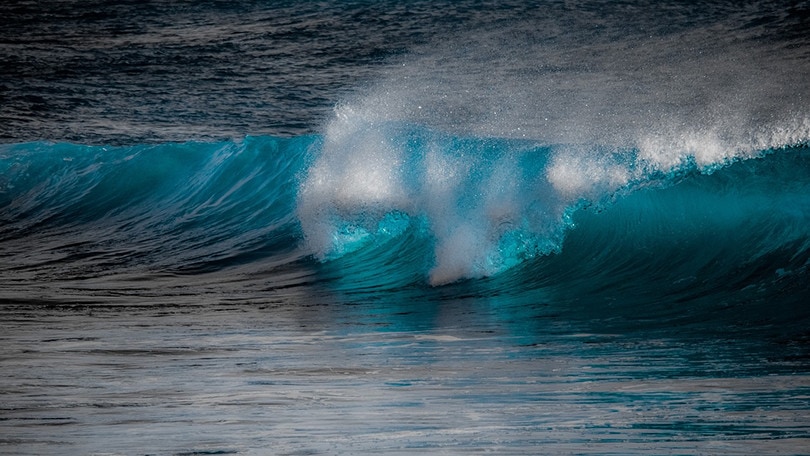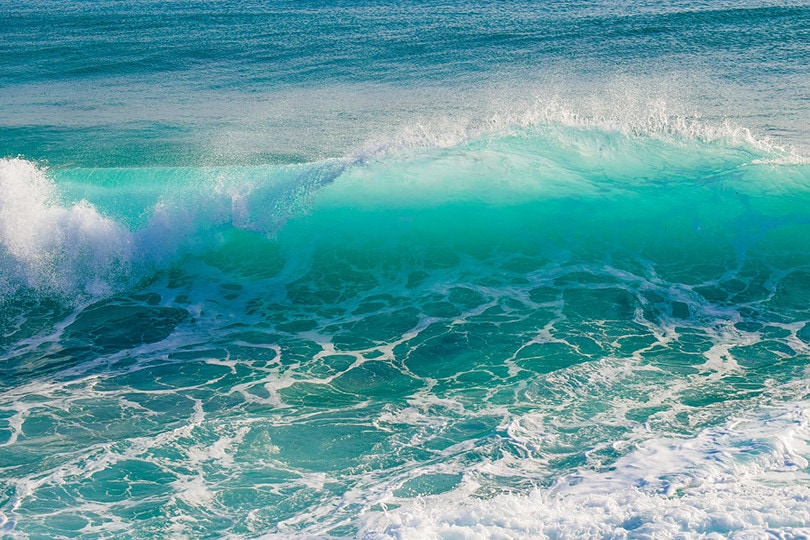What Is Tidal Energy? Pros, Cons, Types & FAQs
-
Ed Malaker
- Last updated:

With the current push toward an environmentally friendly planet, everyone is looking for new ways to create power that doesn’t produce the same harmful byproducts that fossil fuels do. Along with solar power and windmills, one of the fastest-growing new forms of energy comes from tidal energy. Tidal energy uses the oceans’ power to produce electricity. Keep reading as we discuss how tidal energy works and where we use it, along with its advantages and disadvantages.

How Does It Work?
As the name suggests, tidal energy harnesses the oceans’ power. Rising and falling tides create consistent and predictable movement in the water, and scientists have developed several devices that can transform this movement into electricity.

What Are the Different Types of Tidal Energy?
Tidal Streams
A tidal stream is a fast-flowing current of water created by the moving tide. These currents are excellent places to place an underwater turbine to harness its power. These underwater turbines look like windmills and create energy as the water moves through them, spinning the blades. The construction crew can install the turbines horizontally or vertically, depending on which direction generates more power.
Barrage
A barrage tidal energy system uses a dam to help create power. As water spills over the dam, it pours over turbine blades, which helps create electricity. The downside to the barrage system is that it’s expensive because it requires a considerable amount of construction that will affect local wildlife. It will also increase the amount of silt in the area, which will impact plant life.
Tidal Lagoon
A tidal lagoon requires builders to create an artificial lagoon along the coast. As the tide rises, water flows into the lagoon, creating a stream that can turn the blades of a turbine. As the ocean moves into the low tide, the reverse happens, and water flows out of the lagoon, again spinning the blades of the turbine. This method has the least environmental impact because it doesn’t disrupt any important currents, as the tidal stream method does, nor does it add silt and change the environment, like the barrage method does.
Where Is It Used?
France
Since title energy requires access to the ocean, it’s primarily used by coastal countries, though the energy that it creates could help reduce strain on facilities further inland. La Rance, France, is the location of the first tidal energy plant, and it started making electricity in 1967. One of the factors for choosing the spot is that the area has extremely high tides, which can raise and lower the water by as much as 20 feet.
Russia
Russia created a plant that started operating in 1968. It had plans to build more sites, but there is no current information about their current status. South Korea has the most powerful plant, and it was built in response to a deteriorating freshwater reservoir.
Other Countries
Other countries that use tidal energy power plants include Great Britain, Canada, Norway, India, China, and the United States. As the cost of installing these facilities decreases and the technology behind them improves, we’ll likely soon see more of these plants around the world.
Advantages of Tidal Energy

Reliability
Currently, tidal energy is the most reliable and consistent renewable energy. Since the moon creates the tide using gravitational force, it works around the clock, regardless of weather or time of day, unlike windmills that are heavily reliant on the weather and produce different amounts of energy each day. Similarly, solar power is affected by clouds; even a few small ones can affect how much power solar panels can create.
Does Not Create Pollution
Tidal energy does not create any pollution, nor does it require the use of any fossil fuels to produce electricity while it is operating, which is a huge advantage for the environment.
Disadvantages of Tidal Energy
Cost of Implementation
The primary disadvantage of using tidal energy is that it can be quite expensive to install, so few coastal countries use it. Some reports suggest that installation can cost between $1.3 million and $1.8 million. Another downside to using title energy is that some installations can harm marine life, especially the turbines in the barrage system, which can move quite quickly.
New Technology
Another downside of using tidal energy is that its technology is still quite new, and the energy that it produces is quite low compared to other methods. It will likely be several years before the technology advances enough for these tidal methods to produce enough power to reduce our dependence on fossil-fuel-based systems.

Legal Concerns
One of the things preventing the United States from creating title energy plans is legal concerns surrounding underwater land ownership, and there’s also a great deal of concern about underwater environmental damage. It’s difficult to find investors in the United States because the power output is not that great. Technological advancements could help make this type of power more readily available in the United States. However, there aren’t many areas in the United States where it would work well compared to other countries like China, France, England, Russia, and Canada, which have many ideal locations.
Environmental Impact
While tidal energy plants don’t create any pollution, they can still damage the environment. For example, large turbines can disrupt the flow of the current that it’s trying to harness, which can affect local wildlife that depends on that flow of water.

Frequently Asked Questions (FAQs)
What country uses the most tidal power?
Currently, the country that receives the most power from tidal energy is South Korea. In its system, water rushes through large tunnels in a dam. This water turns the blades of several large turbines, which create quite a bit of power.
How efficient is tidal power?
Tidal power is one of the most efficient forms of energy available. Fossil fuel has an efficiency rating of 30%, which is not even close to the 80%–85% efficiency that you can get from tidal power.
Why aren’t there more tidal power stations?
Tidal power is expensive to implement because it requires a great deal of construction to make it operational. A tidal lagoon, for instance, requires building an artificial lagoon on the coast to control the water as it rises and falls so it will move through the turbine and create energy. Furthermore, the turbines can interfere with the underwater environment by blocking water flow or creating hazardous conditions for fish that might swim into them. Also, the equipment quickly breaks down in the ocean water, making it difficult to find investors.
See also: 13 Welfare Statistics and Facts

Conclusion
Tidal energy is an emerging type of renewable energy that is more efficient than many other methods. It’s more consistent because it uses ocean tides that the moon controls instead of relying on sunlight that isn’t available at night or when it’s cloudy or relying on the wind that isn’t always available. Unfortunately, this method requires further updated technology to make these ideas more affordable and effective.
See also: Renewable Energy in the UK — Percentage and Production Rates
Featured Image Credit: dimitrisvetsikas1969, Pixabay
Contents

